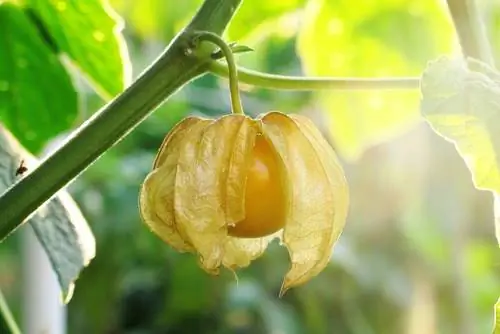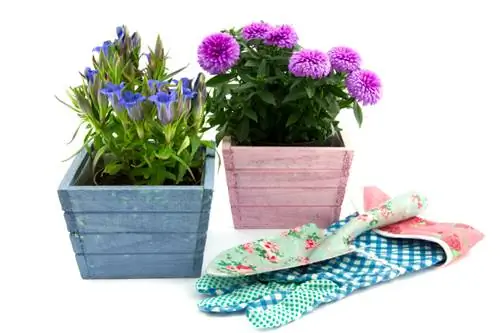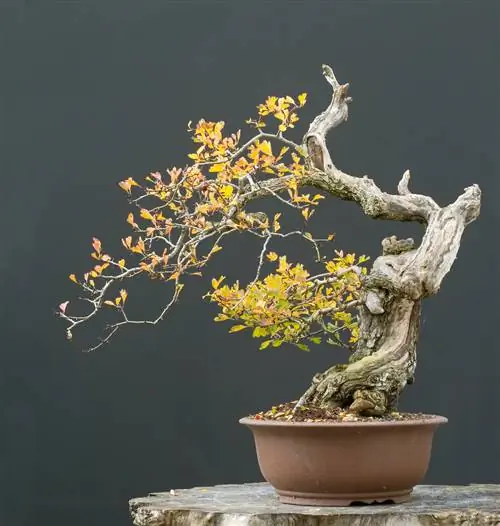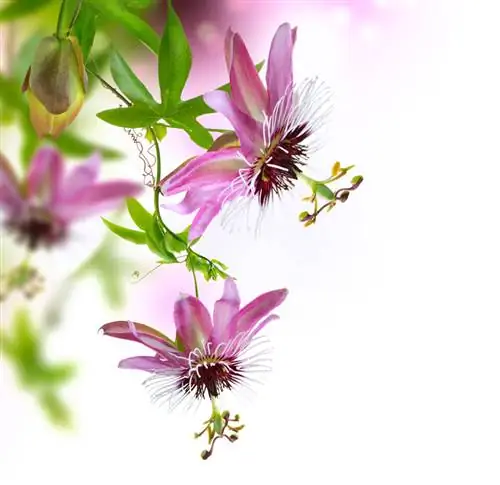- Author admin [email protected].
- Public 2023-12-16 16:46.
- Last modified 2025-01-23 11:20.
Strictly speaking, the name “Physalis” does not refer to a single plant, but to an entire genus of plants from the nightshade family. The best-known representatives are the lantern flower, which is native to Europe, and the Andean berry, which comes from the Andes. Both species are easy to care for and thrive both in pots and in the garden.
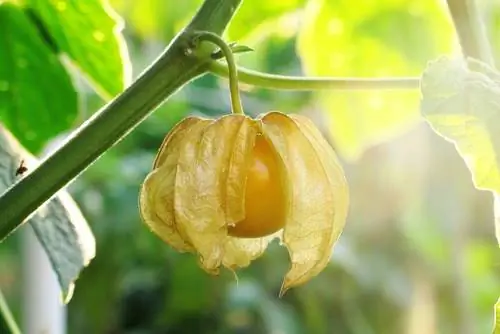
How to properly care for the Physalis plant?
Physalis care includes regular watering, sparing fertilization and, if necessary, repotting. Physalis thrive both in pots and in the garden and are perennial but not hardy. In winter they need a frost-free, bright location.
How often does a Physalis need to be watered?
Physalis is always a very thirsty plant, its water requirements, especially during fruit formation, are high. It is best to water your Physalis every few days, but then abundantly. Watering again becomes necessary when the top layer of soil has dried out. However, the root ball must not dry out even in winter.
Does a Physalis need fertilizer? If yes, how much?
The Physalis does not have a particularly high nutrient requirement. On the contrary, over-fertilization can cause the plant to rot or grow excessively - to the detriment of the fruits. Specimens planted in the garden only need a little compost or manure before planting. Potted Physalis, on the other hand, should be given liquid tomato or vegetable fertilizer after about two months.
Does the Physalis need to be repotted?
Physalis plants grow very quickly and need a new pot at the latest when the roots have already grown out of the old one.
Are Physalis perennial?
In particular, the Andean berry, which comes from the subtropics, is often classified as an annual in this country. However, it is actually a perennial plant that can be overwintered with relatively little effort. Almost all Physalis are not hardy.
How can I overwinter my Physalis?
It is best to overwinter your Physalis in a frost-free but not too warm place. Since it is usually an evergreen plant (except the lantern flower, which is summer green), the winter quarters should not be too dark.
My Physalis is sticking. What could that be?
In this case, your Physalis is most likely infested with plant lice, especially scale or mealybugs. You can treat the plant with soapy water to kill the lice.
My Physalis is getting yellow leaves or its leaves are falling off. Why is that?
Yellow leaves are usually an indication of too little water or too few nutrients. However, especially in winter, these signs can also be an indication of a lack of light.
Can you plant Physalis in the garden?
Yes, the Physalis also thrives in the garden. However, the plant will not survive the first frost (let alone the following one), which is why you should dig it up again if possible and keep it potted indoors over the winter. The lantern flower, on the other hand, can only be cut down to the ground in autumn; it will sprout again the following spring due to its hardy roots.
Tip
Even if there are still a lot of unripe fruits hanging on your Physalis, you can put it in its winter quarters. The berries will ripen there. Only unripe Physalis that have already been harvested no longer reach maturity.

